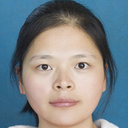Effect of ginsenoside Rg3 on tyrosine hydroxylase and related mechanisms in the forced swimming-induced fatigue rats.
Nyckelord
Abstrakt
BACKGROUND
Ginsenoside Rg3 has shown multiple pharmacological activities and been considered as one of the most promising approaches for fatigue treatment. However, little is known about the cellular and molecular mechanisms of Rg3 on anti-fatigue and the effect of Rg3 on dopaminergic system has not been reported yet. The major aim of this study is to investigate the effect of Rg3 on TH expression and the related biochemical parameters, such as PKAα, ERK1/2, Akt and α-synuclein in brain of fatigue rats.
METHODS
Weight-loaded forced swimming was performed to establish an animal model of fatigue. Rg3 (10mg/kg, 50mg/kg and 100mg/kg) was intragastrically administrated before swimming. The effect of Rg3 on the expression and phosphorylation of TH and TH-related proteins in fatigue rats or in SH-SY5Y cells was assessed with western blotting. HPLC was used to examine the level of DA and DOPAC in the fatigue rats tissues.
RESULTS
TH and phosphorylated TH were decreased in different brain regions of which ventral midbrain were less affected in weight-loaded forced swimming rats. Pretreatment with Rg3 significantly suppressed fatigue-induced decrease expression of TH and TH phosphorylation. Also treatment with Rg3 reversed the decrease expression of PKAα as well as the phosphorylation of ERK1/2 and Akt which were induced by weight-loaded forced swimming. Moreover, weight-loaded swimming could induce the increase expression of α-synuclein in hippocampus and midbrain, while suppressed α-synuclein expression in striatum and prefrontal cortex. Furthermore, Rg3 could induce the increase of TH expression and phosphorylation which was accompanied with elevated expression and phosphorylation of related kinase proteins in vitro, while the inhibitors of kinase proteins could suppress these effects of Rg3. In addition, HPLC results showed that Rg3 could reverse the weight-loaded swimming-induced increase of DOPAC/DA ratio.
CONCLUSIONS
Our data suggest that fatigue can induce the decrease of DA which might partially result from the change of TH expression and phosphorylation, and Rg3 can reverse these fatigue-induced changes. The underling mechanisms may include the activity changes of PKAα, ERK1/2, Akt and α-synuclein.



